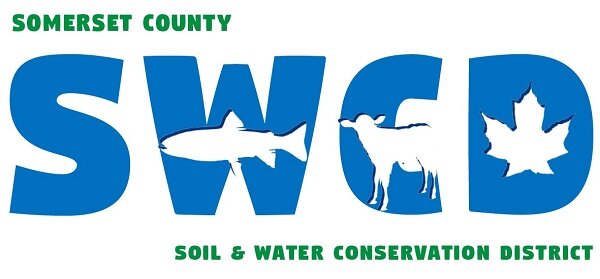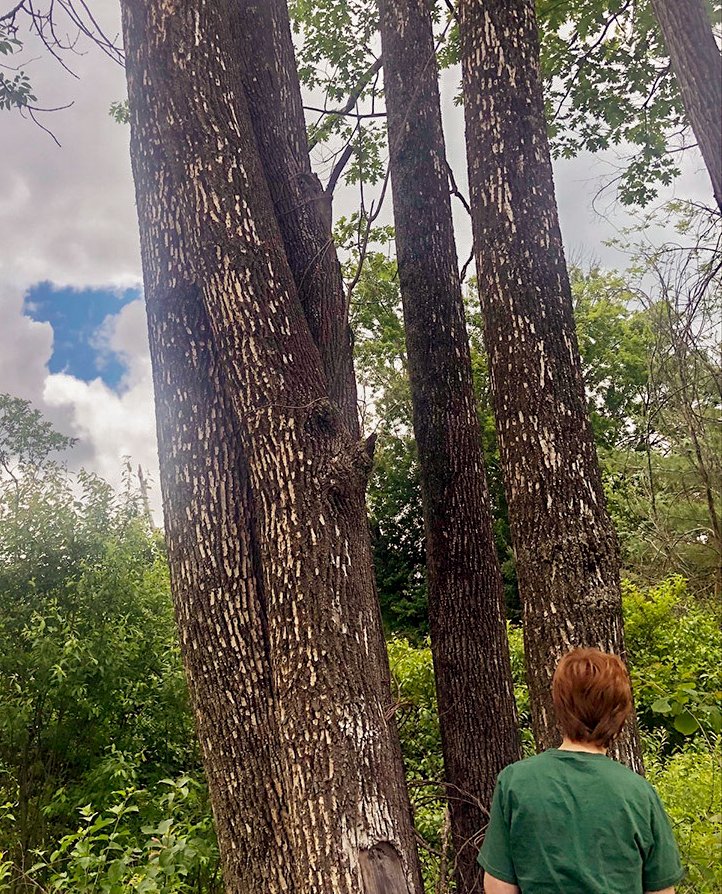Emerald Ash Borer Detections in Oakland and Waterville Prompt Expansion of Quarantine Area into Somerset County
State of Maine reminds everyone to use local or heat treated firewood and announces Emergency Order expansion to slow the spread of emerald ash borer.
AUGUSTA - The Department of Agriculture, Conservation and Forestry’s (DACF) Maine Forest Service (MFS) has expanded an Emergency Order to restrict the movement of ash from areas likely to harbor emerald ash borer (EAB). This order is in response to detections in Oakland, Waterville and Lewiston this month and earlier finds in Lovell and Gray and is in addition to the state quarantine rule on EAB. The order and the quarantine exist to help slow the spread of EAB within Maine.
EAB is a shiny green beetle killing ash trees in Maine and many other parts of North America. In the case of the Kennebec County detection, a chance sighting of bright spots on ash bark at highway speed on I-95 led to follow-up surveys on the ground confirming the beetle’s presence.
Blonding caused by woodpeckers looking for EAB larvae and pupae
In Lewiston, a crew examining declining ash viewed from the highway found emerald ash borer galleries in nearby trees. Although the detections are new, in at least one of the sites, the infestation has been developing for several years.
EAB boring galleries
“These detections are a good reminder to leave your firewood at home and use local or heat-treated firewood. In the case of the detection in Oakland, we can tell by evidence in the trees that the EAB has been lurking there for several years. Emerald ash borer is one of many insects and diseases that pose new threats to our trees, forests, environment, and economy. Many others can also hide in or on firewood and be transported to new places when we move firewood.”
Ash is an important cultural resource for the Wabanaki, an important street tree and a valuable timber species, accounting for around four percent of Maine's hardwood forest inventory. EAB threatens all ash tree species (excluding mountain-ash) and will have significant ecological and economic impacts on the state. Although pesticide treatments can protect individual trees, and biological control provides long-term hope for keeping ash as part of our forests, there are no practical means to control EAB in forested areas.
Adult emerald ash borer beetles
What can I do to help slow the spread of EAB?
We can all support healthy forests in Maine. Help slow the spread of EAB and other invasive forest pests by using local or certified heat-treated firewood and encouraging others to do the same.
MFS encourages anyone who thinks they have seen EAB damage outside the areas where it has been confirmed to please report it. You can also help monitor for EAB through visual surveys, participation in a trap tree network and biosurveillance.
Everyone can learn more about other invasive threats to forest health, look out for them, report concerns, and spread word about them to help slow their spread.
About the Emergency Order
What does the order do? The order limits the movement of ash trees for planting and ash tree products such as logs, pulpwood, green lumber, and hardwood firewood from the order area.
What is the order area? The order area covers Auburn, Durham, Greene, Lewiston, Lisbon, Mechanic Falls, Minot, Poland, Sabattus, Turner, and Wales in Androscoggin County; Albion, Belgrade, Benton, China, Clinton, Litchfield, Oakland, Rome, Sidney, Vassalboro, Waterville, and Winslow in Kennebec County; Albany Twp, Batchelders Grant Twp, Lovell, Mason Twp, Norway, Otisfield, Oxford, Stoneham, Stow, Sweden, and Waterford in Oxford County; Bowdoin and Topsham in Sagadahoc County and Fairfield, Norridgewock, Skowhegan, and Smithfield in Somerset County. This order area is in addition to areas described in the existing state quarantine, Maine DACF, Agriculture Rules, Chapter 275, which includes areas in Maine and other states and Canada.
How does this impact firewood movement from out of state into Maine, such as wood harvested or processed in New Hampshire? Despite the spread of EAB into Maine, the ban on movement of untreated firewood from out-of-state into Maine remains. Many tree-killing insects and diseases, in addition to EAB, can be moved with firewood. We urge everyone who uses firewood to choose local or heat-treated firewood.
If I'm only moving ash tree products within the order or quarantine area, do I need to worry about spreading EAB? EAB is not found everywhere within the order and quarantine areas. The MFS and our partners concerned with the future of ash trees in Maine encourage those involved in moving ash tree material within the regulated areas to follow Best Management Practices to reduce the spread of EAB.
What is the best practice for firewood for my next outdoor recreation trip?
The next time you head out to camp, fish, canoe, kayak, four-wheel, and otherwise enjoy the outdoors, follow these firewood tips.
Leave your firewood at home.
Buy firewood as close to your destination as possible.
Purchasing certified firewood is the best choice. Buy firewood with a state seal stating the wood has been heat-treated to 160 degrees Fahrenheit for at least 75 minutes.
Be sure to inspect the outside of packages of heat-treated firewood for pests that might hitch a ride after treatment (for example, look for browntail moth cocoons, spongy moth pupae, and spotted lanternfly eggs).
If certified firewood is not available, purchase your firewood as close as possible to where you will burn it.
At some sites, you may be able to gather firewood on or near the site. Check local rules.
Some sites, such as Baxter State Park, prohibit firewood from outside regardless of treatment status.
If you’ve already transported firewood, don’t leave it or bring it home – burn it!
Be sure also to burn any small pieces of bark and debris that have fallen from the wood.
If you can't burn it all within 24 hours, follow firewood disposal and drop-off directions.
If the wood you find locally is not heat-treated and you don't burn it all, don't take it home with you or to your next destination.
More information on EAB can be found on the department’s EAB website.
Questions about the order can be directed to foresthealth@maine.gov or by calling (207) 287-2431.
More information on Firewood can be found on the Maine Forest Service Firewood page and www.dontmovefirewood.org.
all photos and graphics courtesy of Maine DACF




